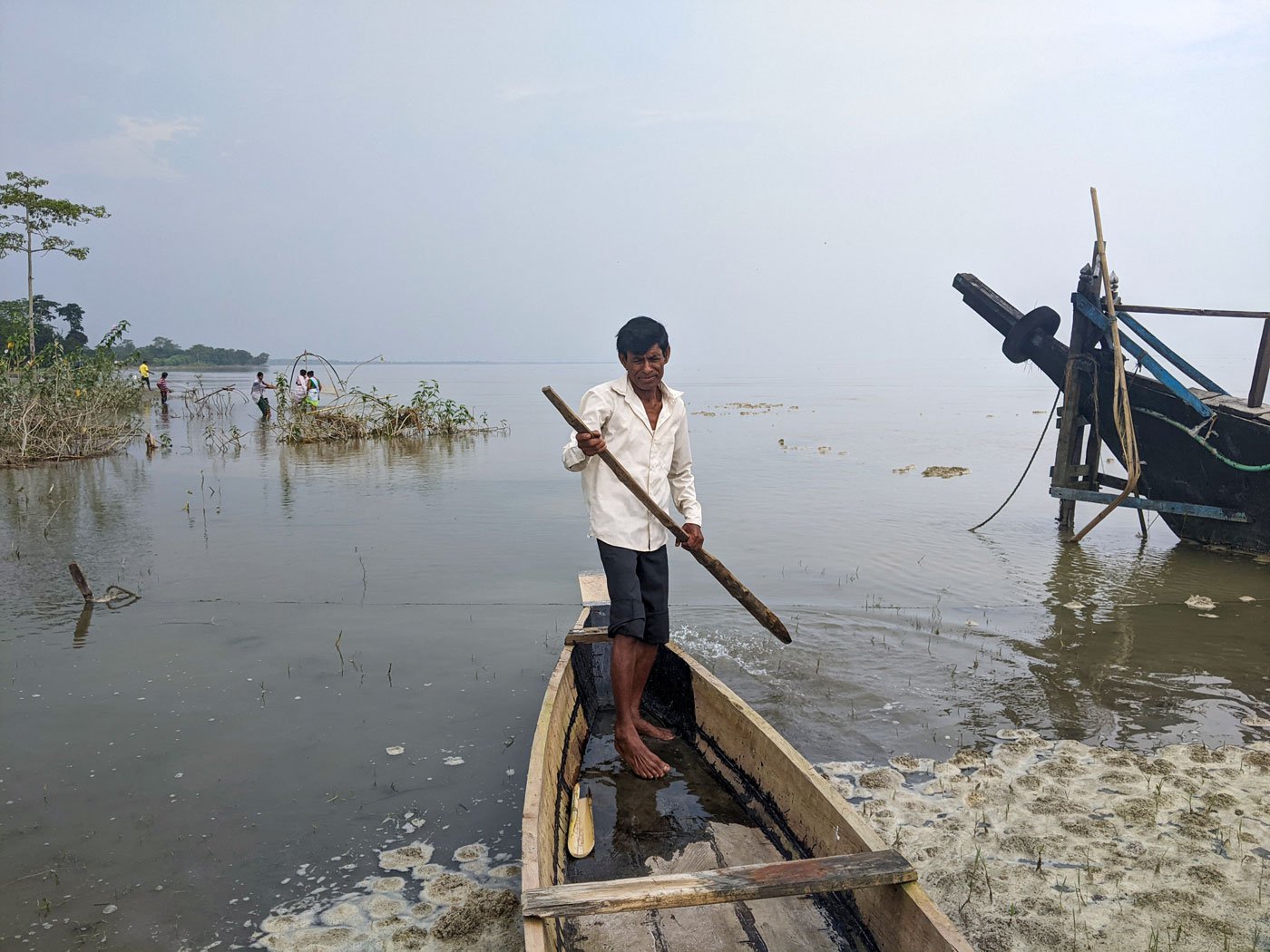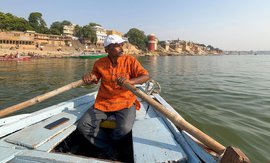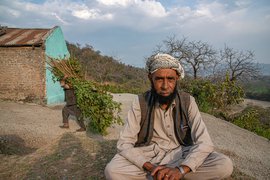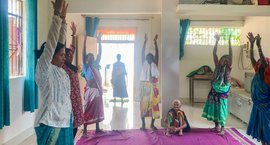Moheshwar Samuah vividly remembers the first time he had to relocate because of floods. He was just five years old. “The water first swept away one of our houses. We got into our boats and escaped to find shelter; relocating to land closest to the island,” Samuah, now in his sixties, says.
Like Samuah, the 1.6 Lakh residents of Majuli – a river island in Assam – have been impacted by frequent floods and shrinking land. The island’s land has shrunk from roughly 1,245 square kilometres in 1956 to 703 sq km in 2017, says this report by the District Disaster Management Authority .
“This is not really Salmora,” Samuah says and adds, “Salmora was taken by the [river] Brahmaputra nearly 43 years ago.” New Salmora was then formed by Brahmaputra and its tributary, Subansiri where Samuah has been living with his wife, daughter and his son's family for the last 10 years.
His new home is a semi-permanent structure made
of cement and mud. The toilet, which is built outside, can only be accessed
with a ladder. “Every year, we are losing land to the Brahmaputra,” he says.

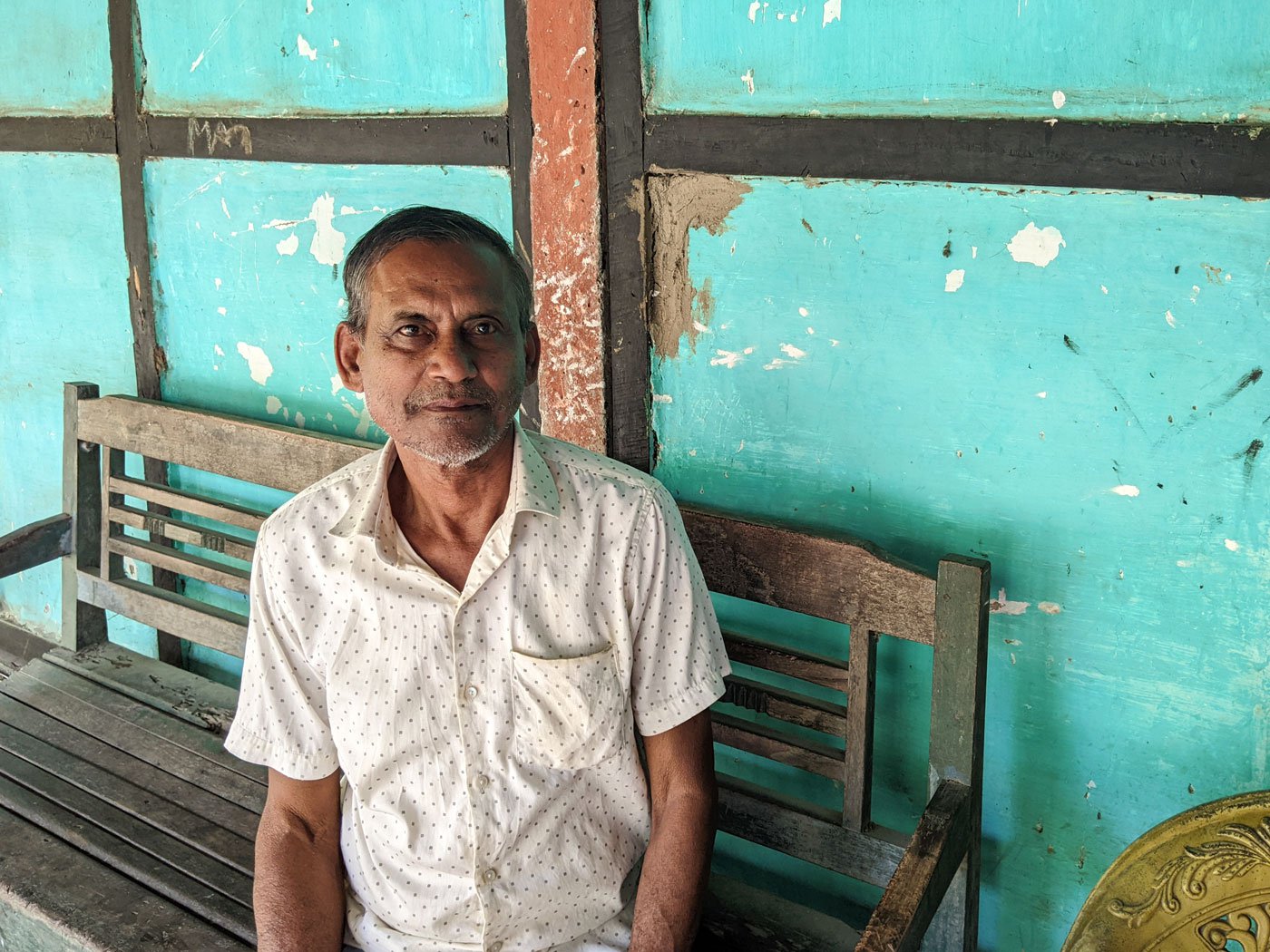
Left: 'That used to be my home' says Moheshwar Samuah, pointing to a chapori (small sandbar island). When Brahmaputra engulfed the island, he had to move to what is now Salmora. Moheshwar has had to migrate several times for the same reason. Right : Jiswar Hazarika, the sarpanch of Salmora gaon, says that frequent floods resulting in the loss of land have affected agricultural production in the village
Frequent flooding has impacted agriculture in the village. “We can’t grow rice, mati dal [black lentil] and vegetables like baingan [eggplant] or pattagobi [cabbage]; now no one has land,” says Jiswar, Salmora’s sarpanch. Many residents have taken up other work like boat-making, pottery and fishing.
“Salmora’s boats are in demand across the island,” says Samuah, who makes boats, because many people from chaporis (smaller islands) need to use boats to cross the river, ferry children to school, fishing and during floods.
Samuah taught himself the craft of boat-making; they work in groups of three. The boats are made from hazal guri , an expensive wood which is not easily available but is used because it is “strong and long-lasting,” according to Samuah, which they get from vendors in Salmora and neighbouring villages.
A big boat takes a week to complete, a smaller one takes five days. With many hands pitching in, they can make 5-8 boats a month. A big boat (carrying 10-12 people and three motorcycles) costs Rs. 70,000, a smaller one Rs. 50,000; these earnings are split between two or three of them.
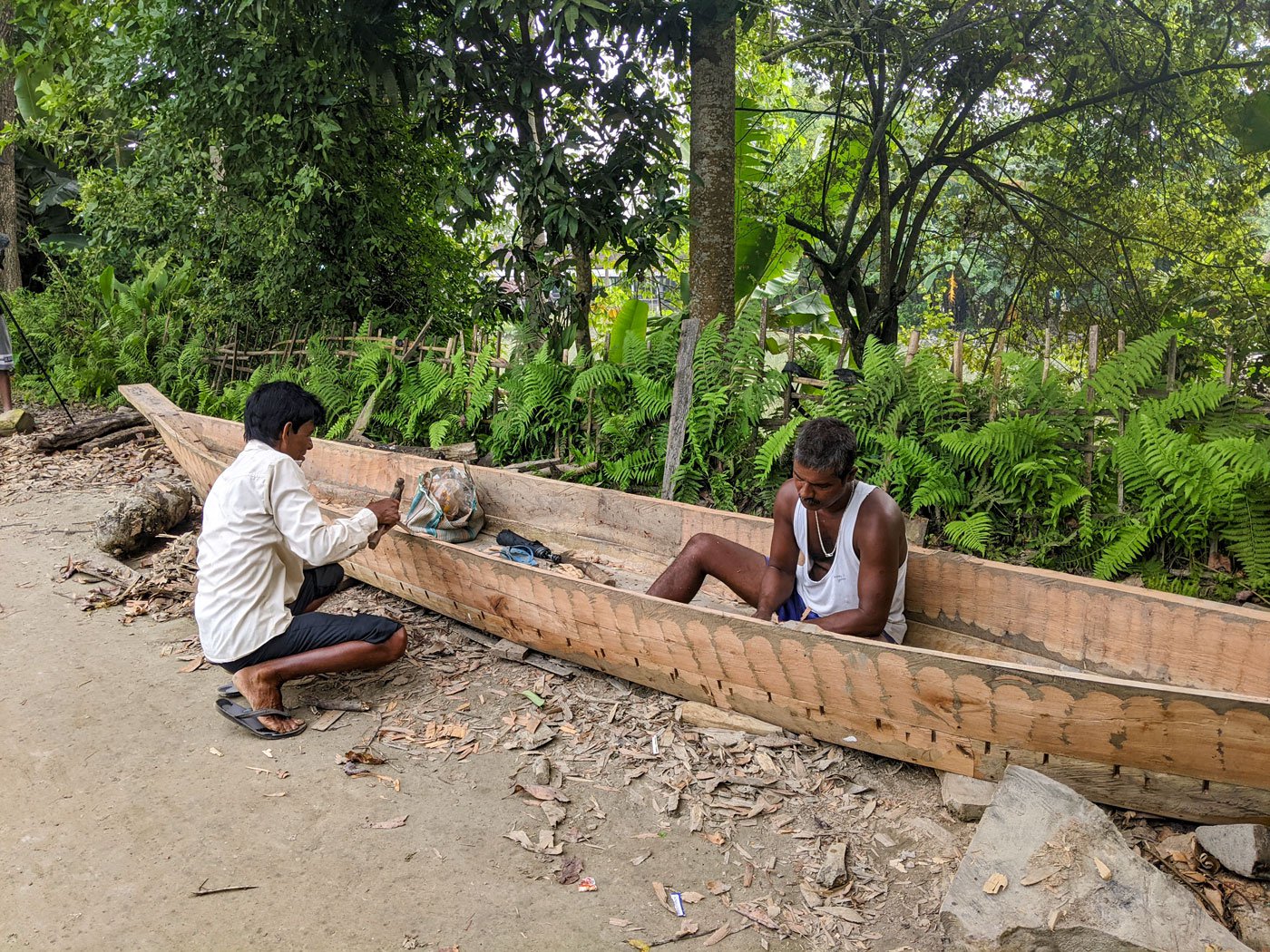

Left: Boats are in demand in Salmora and Moheshwar taught himself the craft. He usually works on them with two or three other people with whom he also splits the earnings. Right: Fishing is popular among the residents of Salmora. Moheshwar uses the atwa jaal , a fishing net made out of bamboo, to catch horu maach or small fish. Standing next to him is Moni Hazarika, another resident of Salmora


Left: Rumi Hazarika rows out into the river to collect firewood which she will later sell. Right: She uses black clay to craft small pots in the Sattriya style and sells them at the local market
The income from boat-making is unstable as orders for boats only come closer to the monsoon (and flooding season). So, Samuah is without work for many months and doesn’t expect a monthly income.
When it floods, Rumi Hazarika, now in her fifties and an expert oarswoman, rows out into the river to collect firewood to sell at the village market; this fetches her a few hundred rupees per quintal. She also sells the pots she makes out of koloh mati (black soil) at Garamur and Kamlabari, which are at the island’s centre, for Rs 15 a piece, and earthen lamps for Rs. 5 each.
“Along with our land, we are losing our traditional practices,” she says, “our koloh mati is now being washed away by the Brahmaputra.”
The reporter would like to thank Krishna Pegu for his help with the story.
